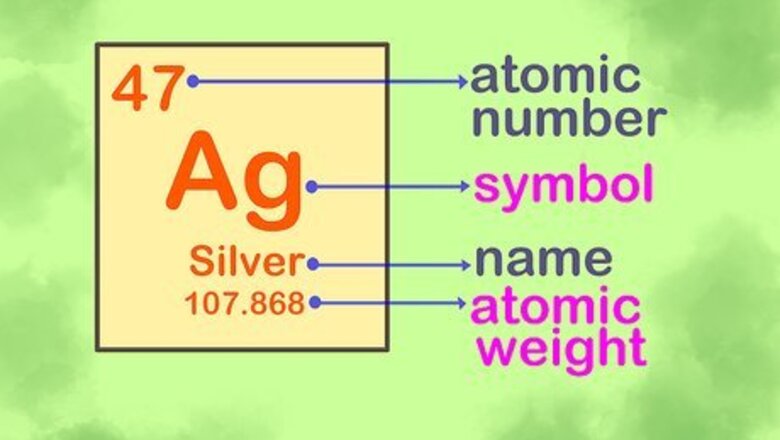
views
Studying the Table
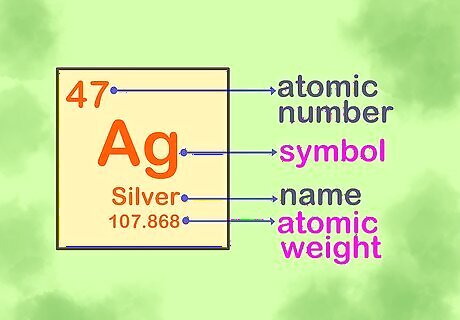
Identify the different parts of each element. Generally, to learn the periodic table, you will need to know the element's name, symbol, atomic number, and occasionally the atomic weight. These are all contained within the element's square on the table. The element name is the word associated with the element. It usually appears in small letters under the symbol. Silver, for example, is the name of an element. The symbol is formed by one or two letters that represent the element. These are the big letters in the box. Ag is the symbol for silver. The atomic number is the number above the symbol. It tells you how many protons the element has. The periodic table is arranged numerically according to atomic number. The atomic number of silver is 47. The atomic weight or mass shows the average size of an atom. This is the number below the symbol. Silver's atomic weight, for example, is 107.868.
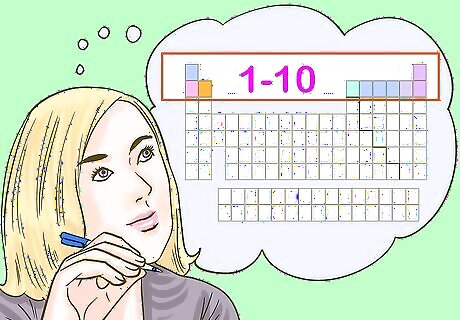
Learn a few elements a day. Start with the first five. Once you have mastered those, add in another five. Keep reviewing the old elements even as you learn new ones. Start studying early so that you have time to memorize all 118 elements. The first ten elements of the periodic table have the atomic numbers 1-10.
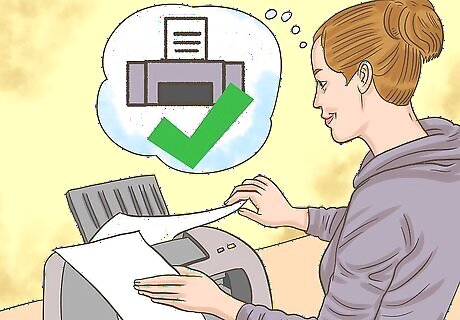
Print out a copy of the periodic table. Wherever you go, it will go with you. It's advisable to print out more than one copy. Keep one on your desk, one in your backpack or purse, and one wherever else you might go. You can also use a digital version on a phone or tablet, but these may be more difficult to use during school or work.
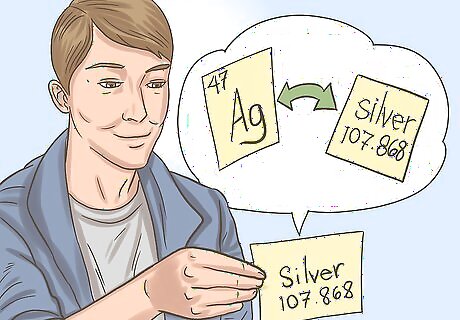
Make flashcards for each element. On one side, put the element symbol, such as Ag, S, or Cu, as well as the atomic number. On the other side, put the full name of the element, such as Silver, Sulphur, or Copper. Use the cards to test yourself. If you need to know the group that each element belongs to, you may want to add that to the flashcard as well. For example, you may write “Ne” on one side and “Neon, a noble gas” on the other.
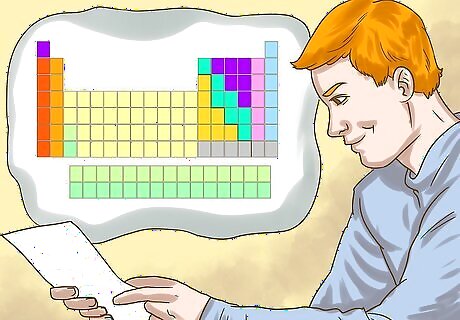
Break down the table into smaller sections. You could go by row, column, atomic weight, groups, or blocks. Find patterns that stick out to you and use those to break up the table into manageable parts. The rows of the table are called periods. These run from one to seven. You might break it up by group, such as halogens, noble gases, or alkaline earth metals. Groups are organized vertically by the numbers running along the top of the table from one to fourteen. The colored portions of the table are called blocks. This may help you remember where the element is located on the table. The f-block, for example, contains the middle portion of the table.
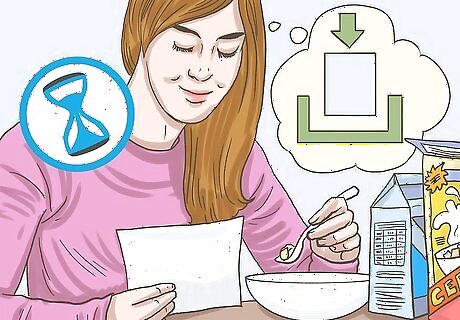
Quiz yourself during your breaks and free time. Instead of cramming for several hours, try studying whenever you have a few minutes to spare. This may be on the bus, during lunch, or while you’re in line. You can: Go through note cards while you eat breakfast. Glance over the chart during a commercial break on TV. Chant the elements in order while running or exercising. Write out the elements while waiting for dinner to cook.
Using Mnemonic Devices
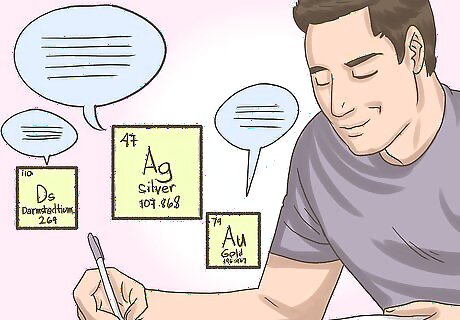
Write a phrase to help you remember each element. Come up with a short slogan, story, or fact related to the sound or symbol of the element. These should be short phrases that help you remember the element’s name and symbol. For example, Argentina was named after the metal silver (Argentum or Ag) because when the Spanish landed there, they thought that the country had lots of silver. Sometimes, you might make something funny to remember the element -- for example," 'EY! YOU! Give me back my GOLD!" can help you remember that the symbol for gold is Au. Darmstadtium is Ds, just like a Nintendo DS. If you want a mnemonic for this, try "DARN! STATS for my game were all lost on my Ds!"
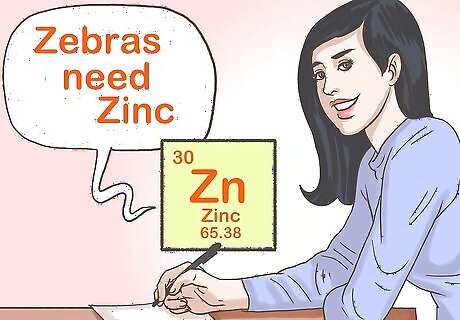
Spell a word or phrase with the letters of the element. Use the letters in an element symbol to create a phrase that will help you remember the element itself. You can also string together a sequence of elements to help you remember their order. These phrases don’t have to make much sense. They just have to help you remember the element. For example, you might say “Zebras need zinc” to remember that Zn is the symbol for zinc. To remember the order of elements, create a sentence where the elements spell a word. For example, to learn Al Si P S Cl Ar, you might say, “Al SiPS CleAr water.”
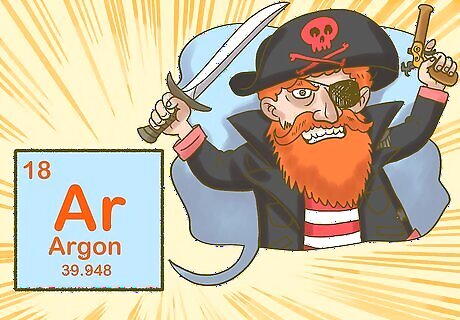
Associate each element with an image. An image will help you recall the element and its symbol more quickly than just memorizing the letters. Assign each element a picture. Use any image that makes sense to you. Use pictures that are associated with the element. For example, for aluminum, you might use a picture of aluminum foil. For helium, you might think of a balloon. For neon, you might think of neon lights in a lobby of a hotel. You can also use pictures that sound like the element. For example, you might picture a pirate for Argon (Ar).

Memorize the periodic table song. You can either create your own song or find one on the internet. Try to find a recently updated version, as new elements have been added. ASAPScience has a recent version of the song with the new elements added. One famous periodic table song is the “The Elements” by Tom Lehrer.
Testing Your Memory

Fill in a blank table from memory. Once you have studied for a few days, find a blank periodic table online. From memory, draw the elements in their proper place. Afterwards, compare it with a normal table to see how many you got right.
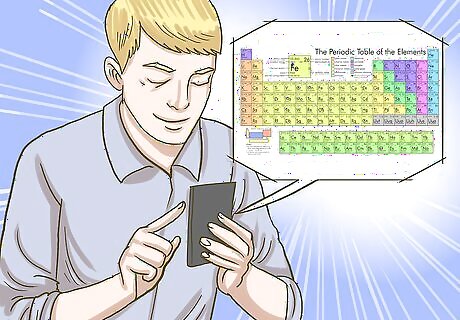
Download periodic table apps onto your phone. There are several apps that can help you study the elements, symbols, atomic numbers, and atomic weights. These can be downloaded onto a smartphone or tablet. Some good apps include: Memorize the Periodic Table NOVA Elements Periodic Table app by Socratica The Elements
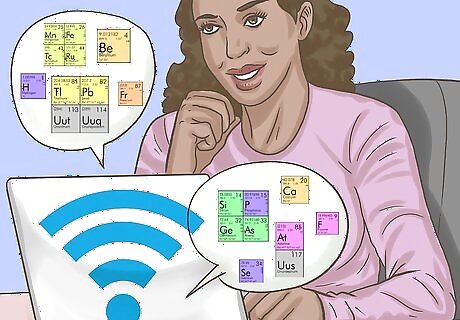
Play online games to help you recall the elements. Several websites have online games that let you match elements to their symbol or fill in the gaps. These games can test your memory and improve your score before a big test. Some good ones include: Scratch: https://scratch.mit.edu/projects/138809684/ Elemental Flash Cards Quiz: http://education.jlab.org/elementflashcards/ FunBrain: https://www.funbrain.com/games/periodic-table-game




















Comments
0 comment